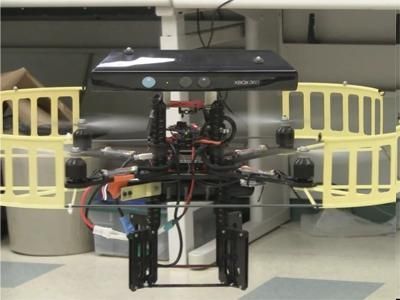Kinect’s 3D sensor is so cheap and effective that it’s getting bolted onto any robot that moves, and quadrotors are just the latest victims. UC Berkeley’s quadrotor is using the Kinect for autonomous flight and dynamic obstacle avoidance, and as long as you don’t come at it from behind, it works great.
Recently, Kreylos added a second Kinect, which has allowed him to create much more complete and life-like images. By combining the video feeds, including the depth data, from both Kinects, Kreylos is able to create a richer 3-D image without the huge swaths of empty space seen in the first video. The ability to create new camera angles simply by combining video feeds from two stationary cameras in real-time is one of the more impressive things we’ve seen a Kinect (or a pair of Kinects) do.
Autonomous quadrocopters are some of the most impressive and terrifying pieces of technology that ever seen.These agile, future deliverers of death are already frighteningly adept at turning on a dime and flying through hoops thrown in the air. With a Kinect strapped to the top of their quadrocopter, researchers at the Hybrid Systems Lab at UC Berkeley are able to replace a number of expensive sensors, and use the Kinect as a radar system, successfully navigating a room and avoiding obstacles. The hack is quite remarkable on its own, but it’s quite terrifying to know that technology capable of guiding an autonomous killing machine can now be found in a $150 gaming peripheral.



